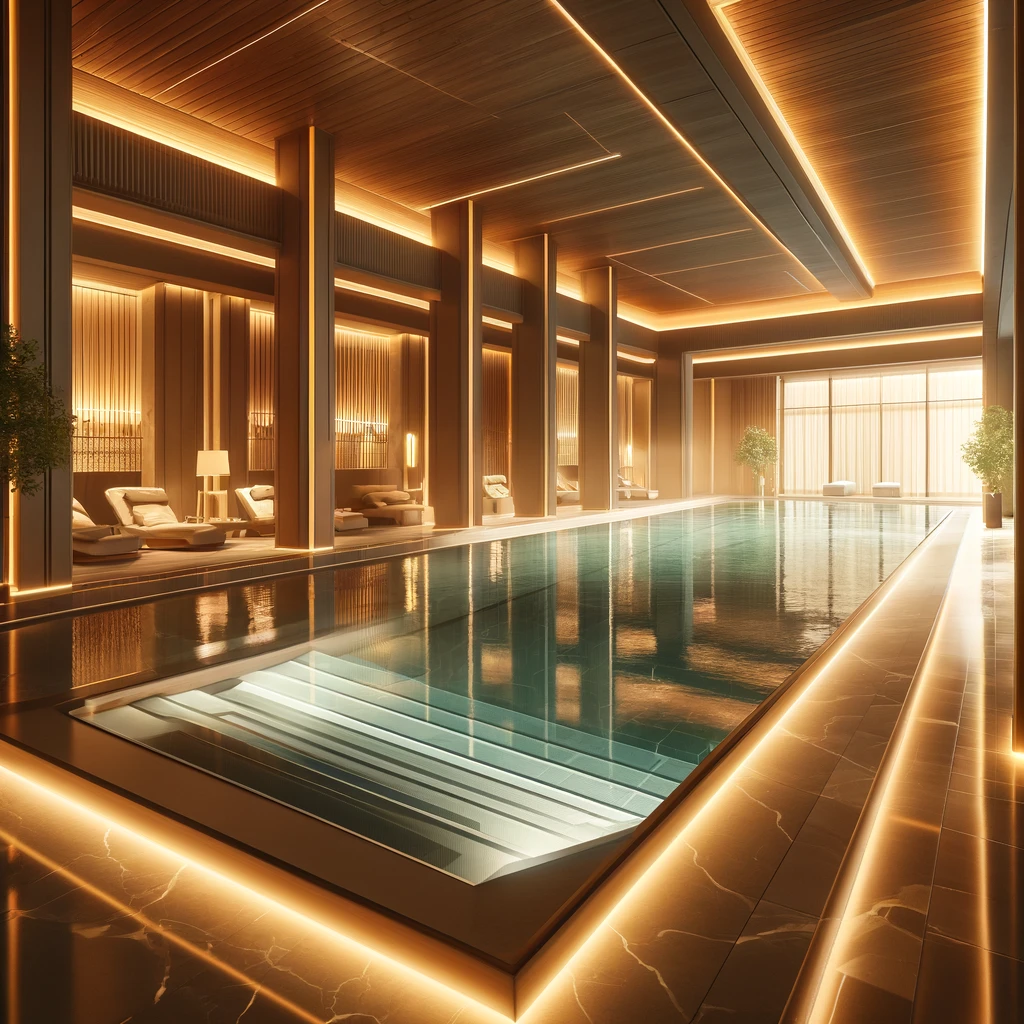Commercial vs. Domestic Spa Pools: Understanding the Key Differences
The designs of spa pools vary significantly between their commercial and residential versions. The main distinction between commercial and domestic spa pools exists through their operational needs and required safety protocols. The distinctions need to be recognized by both facility managers and operators because they determine user protection standards and daily operational requirements. According to the Health and Safety Executive (HSE), spa-pool systems now exist across multiple settings including sports complexes and health clubs and hotels and holiday complexes and cruise ships and private houses and showrooms and exhibitions [5]. Different management approaches must be implemented because these various settings exist.
Hotels and health clubs and leisure centers operate as public settings where commercial spa pools are located [10]. These facilities endure frequent use from many different users due to their design for handling high bather numbers [10]. These systems typically feature:
Deck-level overflows [11]
The filtration and continuous chemical feeder systems function independently from one another [11]
Balance tanks and plant rooms [11]
Water quality needs these specific features because high usage and multiple bather exposure creates contamination risks. According to the HSE document spa pools contain organic material from bathers at higher concentrations than swimming pools because they have more bathers per unit of water [5]. The requirement for stronger and automated water treatment procedures exists to maintain safety standards in commercial spas.
Private residences along with holiday rentals serve as the typical locations for domestic spa pools. The planned user numbers remain at a minimal level. The bathing area of these pools operates with “limited and specific occupancy by a single group at any given moment” [12]. They usually have:
Rigid or inflatable structures [13]
Inline disinfectant feeders [13]
The water gets replaced either after each rental period or on a weekly basis [13]
These systems operate at a limited capacity and they lack the functionality to manage medium to large-scale bather usage because their design and systems do not meet these requirements [13, 14]. Risk management approaches differ based on whether these spas serve private users or operate within business activities [15, 16].
Understanding these differences is important for ensuring that appropriate control measures are in place. Every spa operator and rental property manager must evaluate risk factors while implementing protective measures to safeguard users in both commercial spas and domestic hot tubs. The correct assessment of bather loads combined with proper filtration and disinfection methods remains essential to provide safe and comfortable relaxation.
FAQs
What defines a commercial spa pool?
Hotels and health clubs house commercial spa pools that handle large numbers of users through advanced water treatment technology [10].
What defines a domestic spa pool?
The majority of domestic spa pools exist in residential settings including homes and vacation rentals while featuring basic water management systems [12].
Why is bather load important?
Water quality together with potential contamination risks depends on bather load numbers. The number of bathers requires both frequent water changes and strict disinfection protocols [5, 17].
What additional features do commercial spas have that domestic ones lack?
Commercial spas utilize deck-level overflows combined with separate filter systems and chemical feeders and balance tanks and plant rooms which domestic spas do not feature [11].
Can a domestic spa pool be used for commercial use?
The design limitations and control system inadequacies of domestic spas make them unsuitable for operating in medium to large business environments [13, 14].

Leave a Reply
You must be logged in to post a comment.